History
Playing with Toys — Part II : How Howdy Doody showed us the way
Animation legend Floyd Norman continues his brand-new series for JHM about the production of “Toy Story 2.” In today’s installment, Floyd talks about a popular children’s television show from the 1950s held the key to cracking a lot of the story problems for this then-direct-to-video sequel

Picking up where we left off last week …
In early in 1997, we had been storyboarding on the sequel to “Toy Story” at Walt Disney Studios in Burbank. Occasionally, our small crew would fly north to meet with our Pixar colleagues. Our meetings were always high spirited and energetic because things were wide open at this stage of development. We sat in a circle in the Pixar story room and ideas were thrown back and forth so quickly our director, Ash Brannon struggled to referee what often seemed like a group of maniacs. The creative energy reminded me of my arrival at Disney back in the fifties and sixties when the story development process was controlled by artists and not executives. Coming to Pixar was like going back in time. Working in story was suddenly fun again.
One day, Kirk Hanson brought in a pile of old videotapes of “The Howdy Doody Show.” This popular children’s television program was a big hit in the 1950s. The show was presided over by Buffalo Bob Smith, but the star was really a cartoonish marionette named Howdy Doody. We hadn’t seen this kid show in years, and to be sure it looked pretty primitive and tacky by today’s standards. However, it was a jumping off point for a television show that would play an important part in our story. Woody the cowboy would eventually be the star of his own television show called “Woody’s Roundup.”
In the story development process, characters and ideas come and go. Originally, Woody was being sought after by a group of New York City toy collectors who would make an appearance in the film. However, additional human characters would only be a chore to pull off effectively. The toy kidnapper, Al McWhiggen would be tough enough to animate, since — at that time — digital humans were never as engaging as their toy counterparts. Having the buyers reside in Japan, and never seen, was a more effective story-telling device.
Senorita Cactus
The lovely Latina was replaced by Jessie the Cowgirl
Sketches by John Ramirez
I’ll bet most of you didn’t know that included in our cast of toy characters was a cute cactus toy named, Senorita Cactus. This lovely Latina was in cahoots with the Prospector as they connived to convince Woody to come with them to the Tokyo Toy Museum in Japan. I storyboarded a number of scenes with this cactus cutie until director Ash Brannon called to tell us a feisty young cowgirl had replaced the lovely lady cactus. We all thought the addition of this character was a brilliant idea, and we couldn’t wait to get started doing drawings of Jessie the Cowgirl.
In spite of all these good times, it soon became clear our little group was breaking up. John Ramirez had accepted a position at Warner Bros., and Don Dougherty would be moving on to do story work on “Tarzan.” Kirk Hanson and I were the last two remaining Disney story artists on the sequel. Added to that, the bosses at Pixar requested that the two of us move north to work with the rest of the crew.
A week later, Kirk Hanson and I grabbed a Southwest flight to Oakland. Kirk headed for his hotel, but I drove straight to Pixar Animation Studios in Point Richmond and checked in at the front desk. A nice young man, named A.J. Riebli escorted me across the train tracks to Frogtown, and Pixar’s new production facility. As I walked down the hallway, one of our new producers, Karen Robert Jackson spotted me. The attractive young woman walked up to me and ripped the visitor’s pass off my shirt. “You’re no visitor,” she said. “You work for Pixar now!”
And work, I was about to learn, was just beginning. Our new producers were Helene Plotkin and Karen Robert Jackson, who informed us of an upcoming screening of the film. New storyboards were needed, so the story crew would be working late that evening. So, even before I could check into my hotel room, I was on the drawing board preparing for my first all-nighter. My story colleagues couldn’t help but laugh and say”Welcome to Pixar.”
Working at Pixar usually meant working late.
What the heck. We were lovin’ it.
I lived in a condo in nearby San Rafael. Each morning I would rise early and head down to a nearby coffee shop for a hot latte. As I sat on the patio enjoying my coffee, I could feel the morning sun on my face and the cool breeze blowing in off the bay. Finishing my coffee, I would enjoy a pleasant drive across the San Rafael Bridge to Point Richmond for another day of work. As I drove through the light morning fog, I could see the ferry crossing the San Francisco Bay down below. The air was fresh, the traffic was light, and another exciting day was beginning. I couldn’t help but think to myself “Man, it doesn’t get much better than this.”
Working at Pixar had an aura of coolness and cutting edge. On Friday mornings the Pixar bosses would invite the staff to brunch, and speak of the studio’s growth and upcoming plans. Usually, these pep talks were presided over by John Lasseter and Pixar’s owner, Steve Jobs. When the session was over and the employees mingled together over sandwiches & coffee, I took the opportunity to hook up with several old friends from the Los Angeles area.
At times, I found myself standing next to the boss, Steve Jobs. And I could overhear him grumble about the way Apple Computer was being run. As early as 1997, I had no doubt Mr. Jobs would soon be leaving his day job at Pixar and returning to Apple. Jobs and partner Steve Wozniak forever changed the way we look at personal computing, and Steve had more work to do. Since Pixar Animation Studios was now considered a successful studio, Steve Jobs could focus on more important matters.
The story artists in the Frogtown facility had individual offices. But we seem to spend a good deal of our time in the main story room hashing out the movie. I remember days when the crew would engage in a “story jam” that would last for hours. During these madcap sessions there would be laughing and yelling as sketches were pinned, ripped down, and redrawn on the spot. When we completed a sequence, the floor was littered with sketches and the storyboard was a haphazard mishmash of sketches done by different guys in different styles. Then the “chaotic mess” would be pitched to our co-director Ash Brannon for his take on the sequence. Once again, this “insane” way of working was in direct contrast to our colleagues down south where the process went according to the “efficient system” the creative executives had put in place.
“Free at last, free at last !”
I’m working at Pixar and having a ball
Of course, there were also disappointments along the way. I remember the day co-producer, Helene Plotkin told us there was no way we could include the “Barbie” sequence in the movie. The cost was too high, and we simply didn’t have the time or the money to pull it off. I confess, many of us were in love with that wacky sequence, and to see it suddenly cut from the film was a major setback. However, this was only a little direct-to-video movie, and we had to deal with reality. But what if this movie was a theatrical feature film? We would have more time and money, and so much more could be done. Could such a change be possible I wondered? Clearly, it was too much to hope for.
On occasion, the Pixar “Brain Trust” from across the tracks would storm into the main story room to see how we were doing. However, these visits from Andrew, Joe and Pete were brief because they were still hard at work trying to wrap story on “A Bug’s Life.” We also had visits from writers Ted Elliott and Terry Rossio who would one day give us “Pirates of the Caribbean: The Curse of the Black Pearl” & “Dead Man’s Chest.”
However, we would soon have a more important visitor from Pixar’s main facility across the tracks. There was someone else who wanted to check on our progress, and this guy’s opinion truly mattered. No doubt you can probably guess whom I’m talking about. His name is John Lasseter.
What did Lasseter think of the movie? We were about to find out.
My sketch of Woody’s trusty steed, Bullseye
This was drawn back in 1997
Next time … “Toy Story 2” gets upgraded to a theatrical feature film, Barbie gets a Spanish lesson, and we learn a lesson from visiting school kids who ask an important question.
Did you enjoy today’s story about “Toy Story 2” ‘s origins. Well, that’s just the tip of the iceberg when it comes to the many stories that Floyd Norman has to tell. Many of which you’ll find in the three books Floyd currently has the market. Each of which take an affectionate look back at Norman’s career in animation.
These include Floyd’s original collection of cartoons and stories — “Faster! Cheaper! The Flip Side of the Art of Animation” (which is available for sale over at John Cawley’s cataroo.com) as well as two follow-ups to that book, “Son of Faster, Cheaper” & “How the Grinch Stole Disney.” Which you can purchase by heading over to Afrokids.com.
So if you want to please any animation fan that are on your holiday shopping list, you might want to consider getting them copies of Floyd Norman’s great books.
History
The Evolution and History of Mickey’s ToonTown
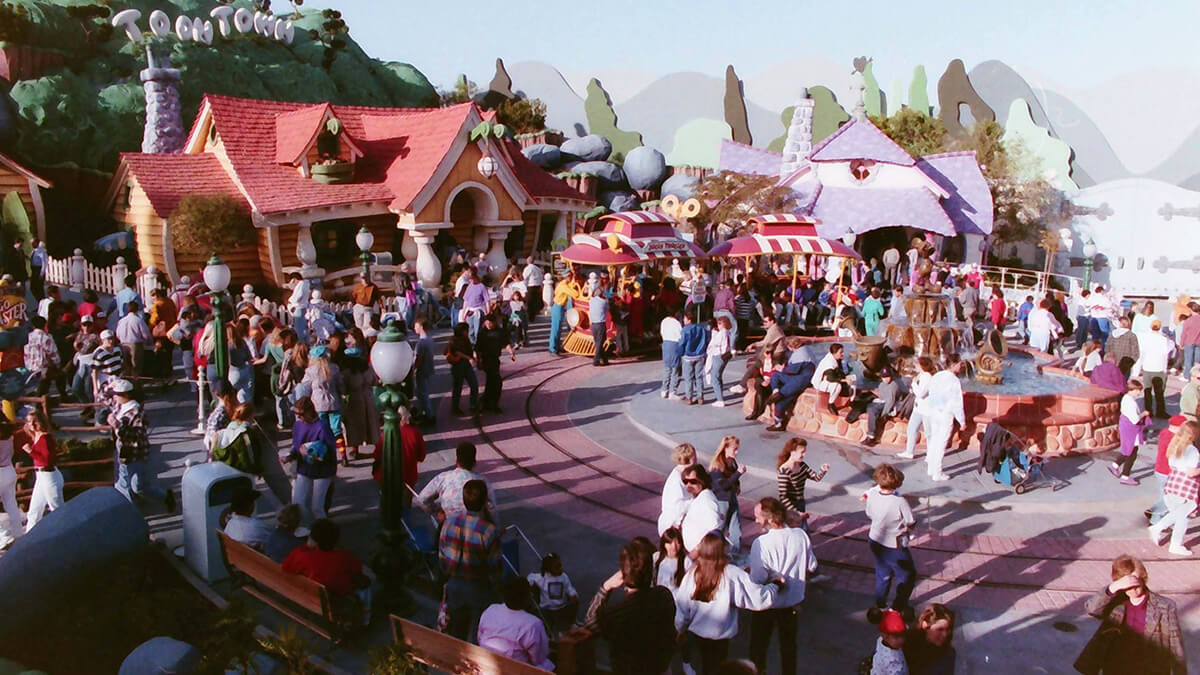
Disneyland in Anaheim, California, holds a special place in the hearts of Disney fans worldwide, I mean heck, it’s where the magic began after all. Over the years it’s become a place that people visit in search of memorable experiences. One fan favorite area of the park is Mickey’s Toontown, a unique land that lets guests step right into the colorful, “Toony” world of Disney animation. With the recent reimagining of the land and the introduction of Micky and Minnies Runaway Railway, have you ever wondered how this land came to be?
There is a fascinating backstory of how Mickey’s Toontown came into existence. It’s a tale of strategic vision, the influence of Disney executives, and a commitment to meeting the needs of Disney’s valued guests.
The Beginning: Mickey’s Birthdayland
The story of Mickey’s Toontown starts with Mickey’s Birthdayland at Walt Disney World’s Magic Kingdom. Opened in 1988 to celebrate Mickey Mouse’s 60th birthday, this temporary attraction was met with such overwhelming popularity that it inspired Disney executives to think bigger. The idea was to create a permanent, immersive land where guests could step into the animated world of Mickey Mouse and his friends.
In the early ’90s, Disneyland was in need of a refresh. Michael Eisner, the visionary leader of The Walt Disney Company at the time, had an audacious idea: create a brand-new land in Disneyland that would celebrate Disney characters in a whole new way. This was the birth of Mickey’s Toontown.
Initially, Disney’s creative minds toyed with various concepts, including the idea of crafting a 100-Acre Woods or a land inspired by the Muppets. However, the turning point came when they considered the success of “Who Framed Roger Rabbit.” This film’s popularity and the desire to capitalize on contemporary trends set the stage for Toontown’s creation.
From Concept to Reality: The Birth of Toontown
In 1993, Mickey’s Toontown opened its gates at Disneyland, marking the first time in Disney Park history where guests could experience a fully realized, three-dimensional world of animation. This new land was not just a collection of attractions but a living, breathing community where Disney characters “lived,” worked, and played.
Building Challenges: Innovative Solutions
The design of Mickey’s Toontown broke new ground in theme park aesthetics. Imagineers were tasked with bringing the two-dimensional world of cartoons into a three-dimensional space. This led to the creation of over 2000 custom-built props and structures that embodied the ‘squash and stretch’ principle of animation, giving Toontown its distinctiveness.
And then there was also the challenge of hiding the Team Disney Anaheim building, which bore a striking resemblance to a giant hotdog. The Imagineers had to think creatively, using balloon tests and imaginative landscaping to seamlessly integrate Toontown into the larger park.
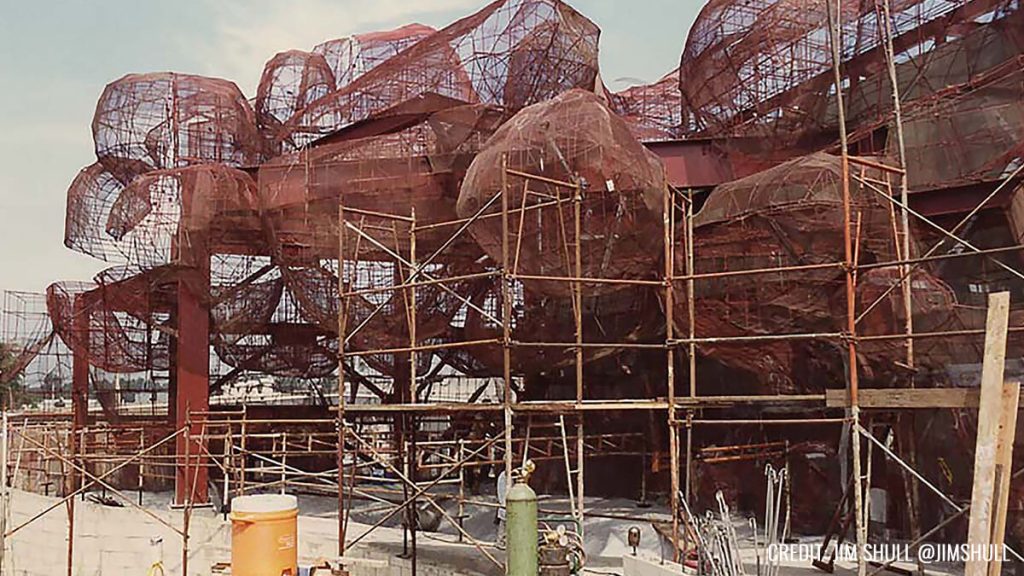
Key Attractions: Bringing Animation to Life
Mickey’s Toontown featured several groundbreaking attractions. “Roger Rabbit’s Car Toon Spin,” inspired by the movie “Who Framed Roger Rabbit,” became a staple of Toontown, offering an innovative ride experience. Gadget’s Go-Coaster, though initially conceived as a Rescue Rangers-themed ride, became a hit with younger visitors, proving that innovative design could create memorable experiences for all ages.
Another crown jewel of Toontown is Mickey’s House, a walkthrough attraction that allowed guests to explore the home of Mickey Mouse himself. This attraction was more than just a house; it was a carefully crafted piece of Disney lore. The house was designed in the American Craftsman style, reflecting the era when Mickey would have theoretically purchased his first home in Hollywood. The attention to detail was meticulous, with over 2000 hand-crafted, custom-built props, ensuring that every corner of the house was brimming with character and charm. Interestingly, the design of Mickey’s House was inspired by a real home in Wichita Falls, making it a unique blend of real-world inspiration and Disney magic.
Mickey’s House also showcased Disney’s commitment to creating interactive and engaging experiences. Guests could make themselves at home, sitting in Mickey’s chair, listening to the radio, and exploring the many mementos and references to Mickey’s animated adventures throughout the years. This approach to attraction design – where storytelling and interactivity merged seamlessly – was a defining characteristic of ToonTown’s success.
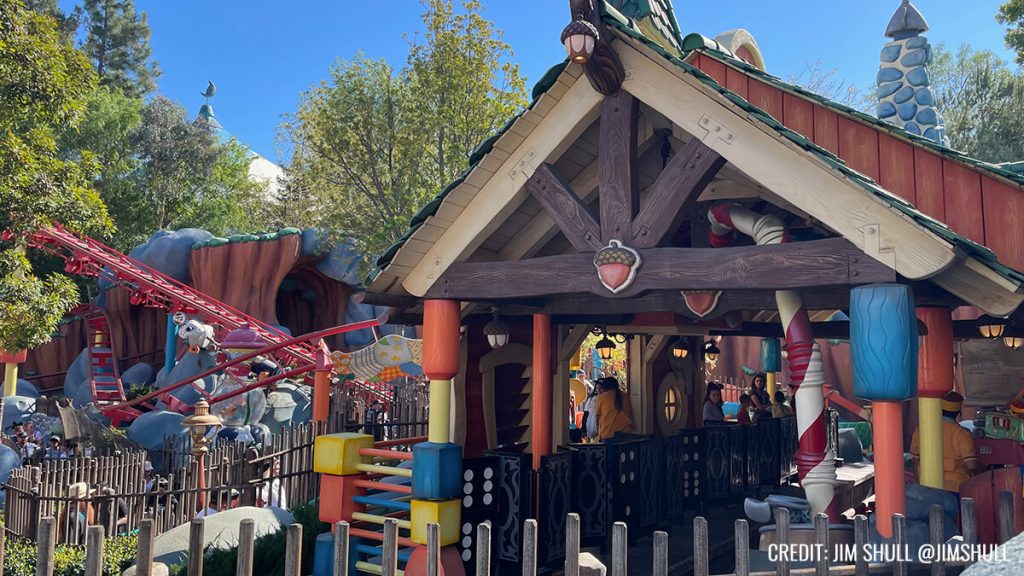
Executive Decisions: Shaping ToonTown’s Unique Attractions
The development of Mickey’s Toontown wasn’t just about creative imagination; it was significantly influenced by strategic decisions from Disney executives. One notable input came from Jeffrey Katzenberg, who suggested incorporating a Rescue Rangers-themed ride. This idea was a reflection of the broader Disney strategy to integrate popular contemporary characters and themes into the park, ensuring that the attractions remained relevant and engaging for visitors.
In addition to Katzenberg’s influence, Frank Wells, the then-President of The Walt Disney Company, played a key role in the strategic launch of Toontown’s attractions. His decision to delay the opening of “Roger Rabbit’s Car Toon Spin” until a year after Toontown’s debut was a calculated move. It was designed to maintain public interest in the park by offering new experiences over time, thereby giving guests more reasons to return to Disneyland.
These executive decisions highlight the careful planning and foresight that went into making Toontown a dynamic and continuously appealing part of Disneyland. By integrating current trends and strategically planning the rollout of attractions, Disney executives ensured that Toontown would not only capture the hearts of visitors upon its opening but would continue to draw them back for new experiences in the years to follow.
Global Influence: Toontown’s Worldwide Appeal
The concept of Mickey’s Toontown resonated so strongly that it was replicated at Tokyo Disneyland and influenced elements in Disneyland Paris and Hong Kong Disneyland. Each park’s version of Toontown maintained the core essence of the original while adapting to its cultural and logistical environment.
Evolution and Reimagining: Toontown Today
As we approach the present day, Mickey’s Toontown has recently undergone a significant reimagining to welcome “Mickey & Minnie’s Runaway Railway” in 2023. This refurbishment aimed to enhance the land’s interactivity and appeal to a new generation of Disney fans, all while retaining the charm that has made ToonTown a beloved destination for nearly three decades.
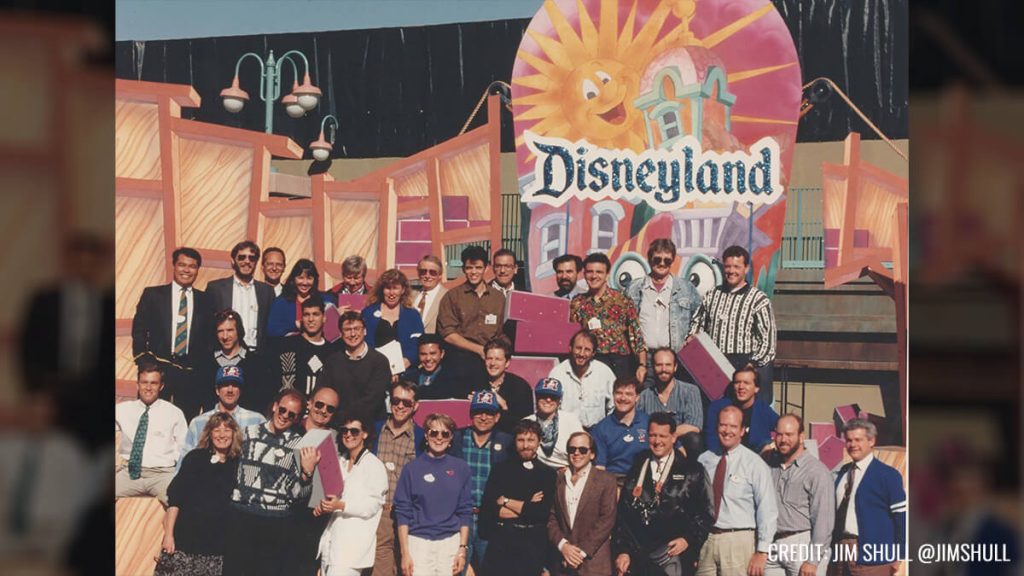
Dive Deeper into ToonTown’s Story
Want to know more about Mickey’s Toontown and hear some fascinating behind-the-scenes stories, then check out the latest episode of Disney Unpacked on Patreon @JimHillMedia. In this episode, the main Imagineer who worked on the Toontown project shares lots of interesting stories and details that you can’t find anywhere else. It’s full of great information and fun facts, so be sure to give it a listen!
History
Unpacking the History of the Pixar Place Hotel
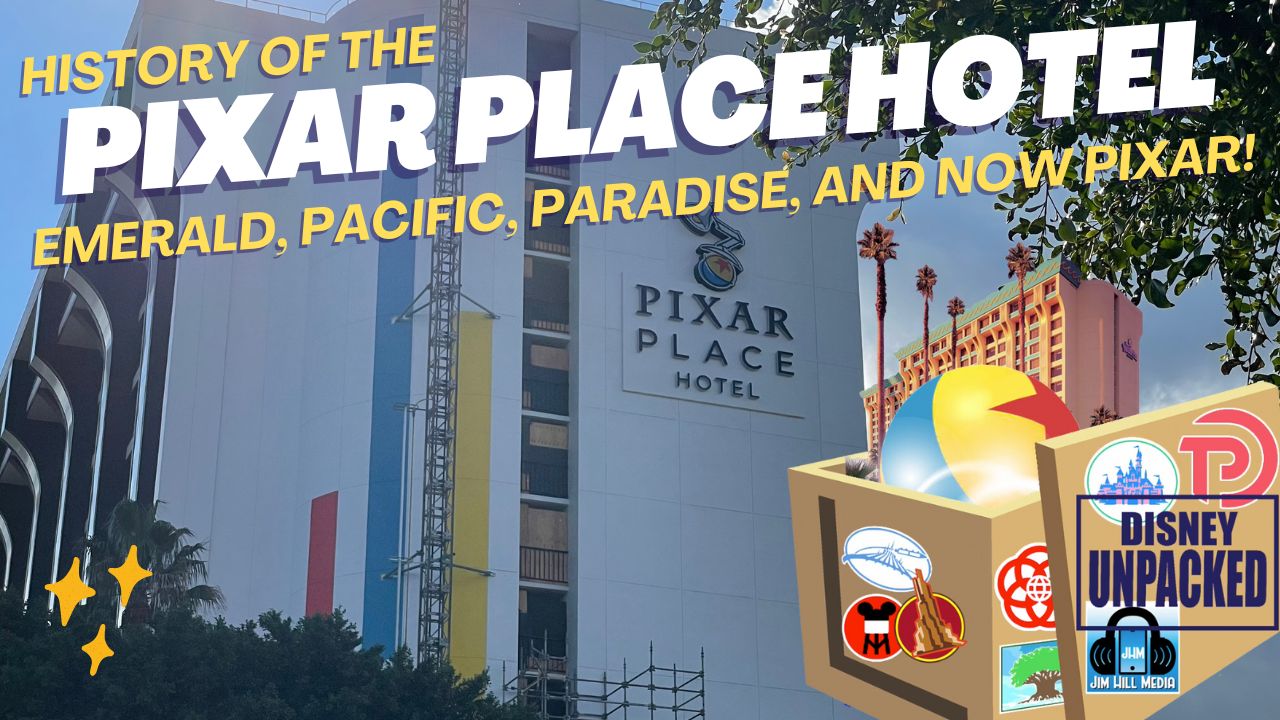
Pixar Place Hotel, the newly unveiled 15-story tower at the Disneyland Resort, has been making waves in the Disney community. With its unique Pixar-themed design, it promises to be a favorite among visitors.
However, before we delve into this exciting addition to the Disneyland Resort, let’s take a look at the fascinating history of this remarkable hotel.
The Emergence of the Disneyland Hotel
To truly appreciate the story of the Pixar Place Hotel, we must turn back the clock to the early days of Disneyland. While Walt Disney had the visionary ideas and funding to create the iconic theme park, he faced a challenge when it came to providing accommodations for the park’s visitors. This is where his friend Jack Wrather enters the picture.
Jack Wrather, a fellow pioneer in the television industry, stepped in to assist Walt Disney in realizing his dream. Thanks to the success of the “Lassie” TV show produced by Wrather’s company, he had the financial means to build a hotel right across from Disneyland.
The result was the Disneyland Hotel, which opened its doors in October 1955. Interestingly, the early incarnation of this hotel had more of a motel feel than a hotel, with two-story buildings reminiscent of the roadside motels popular during the 1950s. The initial Disneyland Hotel consisted of modest structures that catered to visitors looking for affordable lodging close to the park. While the rooms were basic, it marked the beginning of something extraordinary.
The Evolution: From Emerald of Anaheim to Paradise Pier
As Disneyland’s popularity continued to soar, so did the demand for expansion and improved accommodations. In 1962, the addition of an 11-story tower transformed the Disneyland Hotel, marking a significant transition from a motel to a full-fledged hotel.
The addition of the 11-story tower elevated the Disneyland Hotel into a more prominent presence on the Anaheim skyline. At the time, it was the tallest structure in all of Orange County. The hotel’s prime location across from Disneyland made it an ideal choice for visitors. With the introduction of the monorail linking the park and the hotel, accessibility became even more convenient. Unique features like the Japanese-themed reflecting pools added to the hotel’s charm, reflecting a cultural influence that extended beyond Disney’s borders.
Japanese Tourism and Its Impact
During the 1960s and 1970s, Disneyland was attracting visitors from all corners of the world, including Japan. A significant number of Japanese tourists flocked to Anaheim to experience Walt Disney’s creation. To cater to this growing market, it wasn’t just the Disneyland Hotel that aimed to capture the attention of Japanese tourists. The Japanese Village in Buena Park, inspired by a similar attraction in Nara, Japan, was another significant spot.
These attractions sought to provide a taste of Japanese culture and hospitality, showcasing elements like tea ceremonies and beautiful ponds with rare carp and black swans. However, the Japanese Village closed its doors in 1975, likely due to the highly competitive nature of the Southern California tourist market.
The Emergence of the Emerald of Anaheim
With the surge in Japanese tourism, an opportunity arose—the construction of the Emerald of Anaheim, later known as the Disneyland Pacific Hotel. In May 1984, this 15-story hotel opened its doors.
What made the Emerald unique was its ownership. It was built not by The Walt Disney Company or the Oriental Land Company (which operated Tokyo Disneyland) but by the Tokyu Group. This group of Japanese businessmen already had a pair of hotels in Hawaii and saw potential in Anaheim’s proximity to Disneyland. Thus, they decided to embark on this new venture, specifically designed to cater to Japanese tourists looking to experience Southern California.
Financial Challenges and a Changing Landscape
The late 1980s brought about two significant financial crises in Japan—the crash of the NIKKEI stock market and the collapse of the Japanese real estate market. These crises had far-reaching effects, causing Japanese tourists to postpone or cancel their trips to the United States. As a result, reservations at the Emerald of Anaheim dwindled.
To adapt to these challenging times, the Tokyu Group merged the Emerald brand with its Pacific hotel chain, attempting to weather the storm. However, the financial turmoil took its toll on the Emerald, and changes were imminent.
The Transition to the Disneyland Pacific Hotel
In 1995, The Walt Disney Company took a significant step by purchasing the hotel formerly known as the Emerald of Anaheim for $35 million. This acquisition marked a change in the hotel’s fortunes. With Disney now in control, the hotel underwent a name change, becoming the Disneyland Pacific Hotel.
Transformation to Paradise Pier
The next phase of transformation occurred when Disney decided to rebrand the hotel as Paradise Pier Hotel. This decision aligned with Disney’s broader vision for the Disneyland Resort.
While the structural changes were limited, the hotel underwent a significant cosmetic makeover. Its exterior was painted to complement the color scheme of Paradise Pier, and wave-shaped crenellations adorned the rooftop, creating an illusion of seaside charm. This transformation was Disney’s attempt to seamlessly integrate the hotel into the Paradise Pier theme of Disney’s California Adventure Park.
Looking Beyond Paradise Pier: The Shift to Pixar Place
In 2018, Disneyland Resort rebranded Paradise Pier as Pixar Pier, a thematic area dedicated to celebrating the beloved characters and stories from Pixar Animation Studios. As a part of this transition, it became evident that the hotel formally known as the Disneyland Pacific Hotel could no longer maintain its Paradise Pier theme.
With Pixar Pier in full swing and two successful Pixar-themed hotels (Toy Story Hotels in Shanghai Disneyland and Tokyo Disneyland), Disney decided to embark on a new venture—a hotel that would celebrate the vast world of Pixar. The result is Pixar Place Hotel, a 15-story tower that embraces the characters and stories from multiple Pixar movies and shorts. This fully Pixar-themed hotel is a first of its kind in the United States.
The Future of Pixar Place and Disneyland Resort
As we look ahead to the future, the Disneyland Resort continues to evolve. The recent news of a proposed $1.9 billion expansion as part of the Disneyland Forward project indicates that the area surrounding Pixar Place is expected to see further changes. Disneyland’s rich history and innovative spirit continue to shape its destiny.
In conclusion, the history of the Pixar Place Hotel is a testament to the ever-changing landscape of Disneyland Resort. From its humble beginnings as the Disneyland Hotel to its transformation into the fully Pixar-themed Pixar Place Hotel, this establishment has undergone several iterations. As Disneyland Resort continues to grow and adapt, we can only imagine what exciting developments lie ahead for this iconic destination.
If you want to hear more stories about the History of the Pixar Place hotel, check our special edition of Disney Unpacked over on YouTube.
Stay tuned for more updates and developments as we continue to explore the fascinating world of Disney, one story at a time.
History
From Birthday Wishes to Toontown Dreams: How Toontown Came to Be

In the latest release of Episode 4 of Disney Unpacked, Len and I return, joined as always by Disney Imagineering legend, Jim Shull. This two-part episode covers all things Mickey’s Birthday Land and how it ultimately led to the inspiration behind Disneyland’s fan-favorite land, “Toontown”. But let’s not get ahead of ourselves here. It all starts in the early days at Disneyland.
Early Challenges in Meeting Mickey
Picture this: it’s the late 1970s and early 1980s, and you’re at Disneyland. You want to meet the one and only Mickey Mouse, but there’s no clear way to make it happen. You rely on Character Guides, those daily printed sheets that point you in Mickey’s general direction. But let’s be honest, it was like finding a needle in a haystack. Sometimes, you got lucky; other times, not so much.

Mickey’s Birthdayland: A Birthday Wish that Came True
Fast forward to the late 1980s. Disney World faced a big challenge. The Disney-MGM Studios Theme Park was under construction, with the company’s marketing machine in full swing, hyping up the opening of Walt Disney World’s third theme park, MGM Studios, in the Spring of 1989. This extensive marketing meant that many people were opting to postpone their family’s next trip to Walt Disney World until the following year. Walt Disney World needed something compelling to motivate guests to visit Florida in 1988, the year before Disney MGM Studios opened.
Enter stage left, Mickey’s Birthdayland. For the first time ever, an entire land was dedicated to a single character – and not just any character, but the mouse who started it all. Meeting Mickey was no longer a game of chance; it was practically guaranteed.
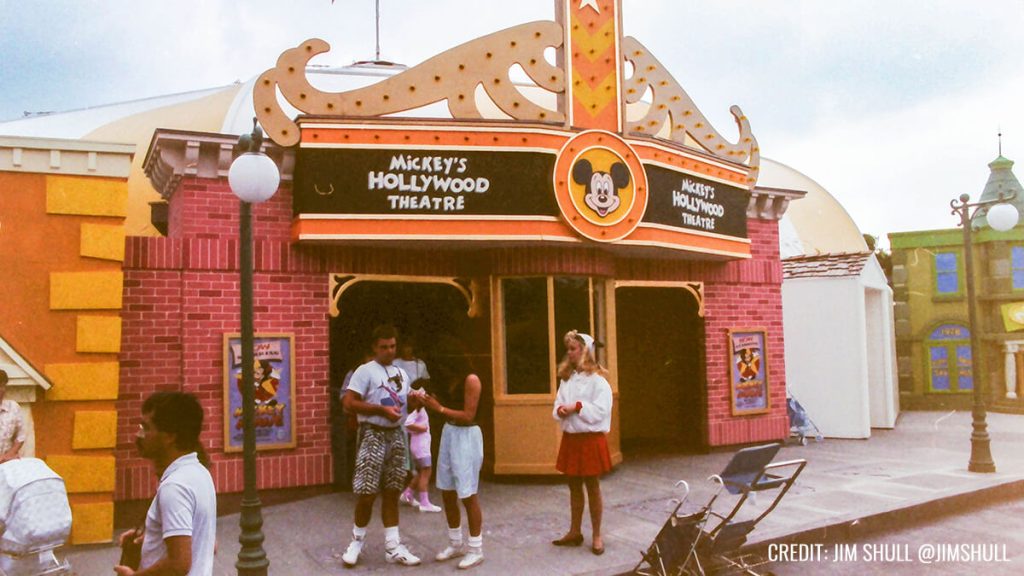
The Birth of Birthdayland: Creative Brilliance Meets Practicality
In this episode, we dissect the birth of Mickey’s Birthdayland, an initiative that went beyond celebrating a birthday. It was a calculated move, driven by guest feedback and a need to address issues dating back to 1971. Imagineers faced the monumental task of designing an experience that honored Mickey while efficiently managing the crowds. This required the perfect blend of creative flair and logistical prowess – a hallmark of Disney’s approach to theme park design.
Evolution: From Birthdayland to Toontown
The success of Mickey’s Birthdayland was a real game-changer, setting the stage for the birth of Toontown – an entire land that elevated character-centric areas to monumental new heights. Toontown wasn’t merely a spot to meet characters; it was an immersive experience that brought Disney animation to life. In the episode, we explore its innovative designs, playful architecture, and how every nook and cranny tells a story.
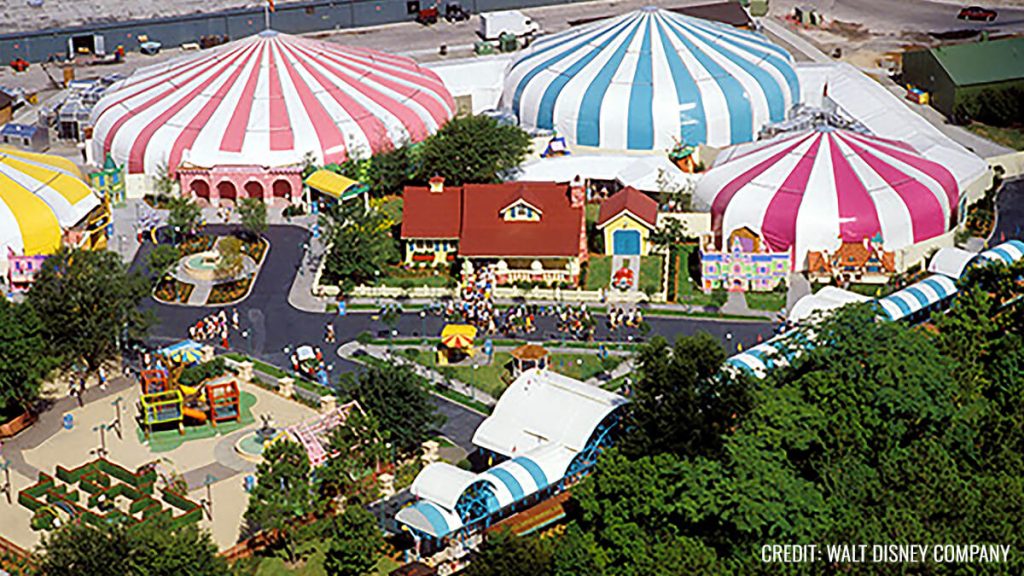
Impact on Disney Parks and Guests
Mickey’s Birthdayland and Toontown didn’t just reshape the physical landscape of Disney parks; they transformed the very essence of the guest experience. These lands introduced groundbreaking ways for visitors to connect with their beloved characters, making their Disney vacations even more unforgettable.
Beyond Attractions: A Cultural Influence
But the influence of these lands goes beyond mere attractions. Our episode delves into how Mickey’s Birthdayland and Toontown left an indelible mark on Disney’s culture, reflecting the company’s relentless dedication to innovation and guest satisfaction. It’s a journey into how a single idea can grow into a cherished cornerstone of the Disney Park experience.

Unwrapping the Full Story of Mickey’s Birthdayland
Our two-part episode of Disney Unpacked is available for your viewing pleasure on our Patreon page. And for those seeking a quicker Disney fix, we’ve got a condensed version waiting for you on our YouTube channel. Thank you for being a part of our Disney Unpacked community. Stay tuned for more episodes as we continue to “Unpack” the fascinating world of Disney, one story at a time.
-
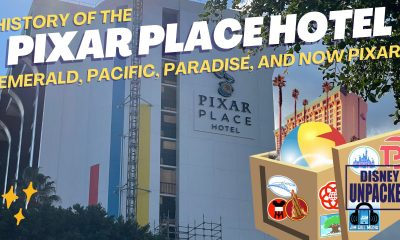
 History10 months ago
History10 months agoUnpacking the History of the Pixar Place Hotel
-
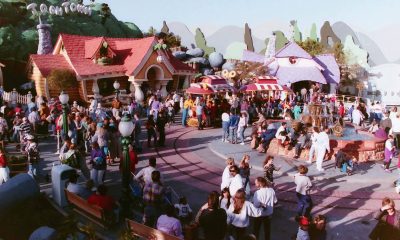
 History9 months ago
History9 months agoThe Evolution and History of Mickey’s ToonTown
-
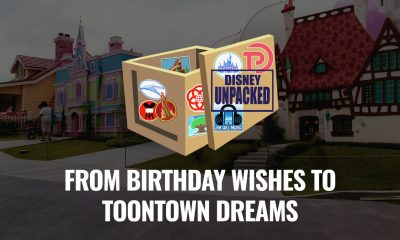
 History10 months ago
History10 months agoFrom Birthday Wishes to Toontown Dreams: How Toontown Came to Be
-
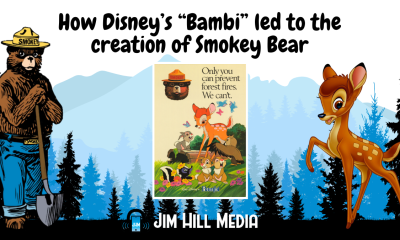
 Film & Movies7 months ago
Film & Movies7 months agoHow Disney’s “Bambi” led to the creation of Smokey Bear
-

 News & Press Releases9 months ago
News & Press Releases9 months agoNew Updates and Exclusive Content from Jim Hill Media: Disney, Universal, and More
-

 Merchandise7 months ago
Merchandise7 months agoIntroducing “I Want That Too” – The Ultimate Disney Merchandise Podcast
-

 Theme Parks & Themed Entertainment2 months ago
Theme Parks & Themed Entertainment2 months agoDisney’s Forgotten Halloween Event: The Original Little Monsters on Main Street
-

 Theme Parks & Themed Entertainment2 months ago
Theme Parks & Themed Entertainment2 months agoThe Story of Mickey’s Not-So-Scary Halloween Party: From One Night to a Halloween Family Tradition








